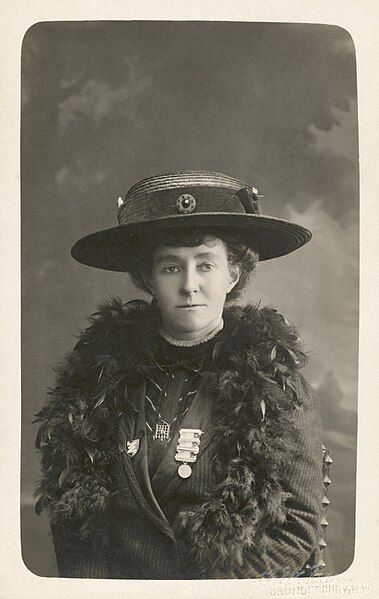The Hunger Strike Medal was a silver medal awarded between August 1909 and 1914 to suffragette prisoners by the leadership of the Women's Social and Political Union (WSPU). During their imprisonment, they went on hunger strike while serving their sentences in the prisons of the United Kingdom for acts of militancy in their campaign for women's suffrage. Many women were force-fed and their individual medals were created to reflect this.
Medal awarded to Myra Sadd Brown in 1912
Medal in its presentation case with silver bar for a hunger strike and enamel bar for force-feeding awarded by the WSPU to Mabel Capper
Hunger Strike Medal awarded to Georgina Fanny Cheffins
Charlotte Blacklock's Hunger Strike Medal, Museum of Australian Democracy collection
A suffragette was a member of an activist women's organisation in the early 20th century who, under the banner "Votes for Women", fought for the right to vote in public elections in the United Kingdom. The term refers in particular to members of the British Women's Social and Political Union (WSPU), a women-only movement founded in 1903 by Emmeline Pankhurst, which engaged in direct action and civil disobedience. In 1906, a reporter writing in the Daily Mail coined the term suffragette for the WSPU, derived from suffragistα, in order to belittle the women advocating women's suffrage. The militants embraced the new name, even adopting it for use as the title of the newspaper published by the WSPU.
Annie Kenney and Christabel Pankhurst of the WSPU, c. 1908
Emmeline Pankhurst founded the WSPU in 1903 and became the most prominent of Britain's suffragettes.
Mannequin of Lilian Metge
Emily Davison became known in the WSPU for her daring militant action.








